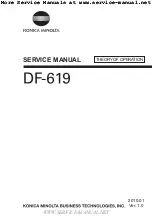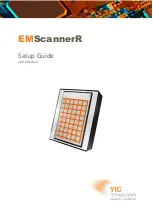
Serial Decode
Setting Level and Hysteresis
The Level setting represents the logical level for bit transition, corresponding to the physical Low and High
distinction. Level is normally set as 50% of waveform amplitude, but can sometimes be set as an absolute voltage
(with reference to the waveform 0 level).
Percent mode is easy to set up because the software immediately determines the optimal threshold, but in some
cases it might be beneficial to switch to Absolute mode when available:
l
On poor signals, where Percent mode can fail and lead to bad decodes
l
On noisy signals or signals with a varying DC component
l
On very long acquisitions, where Percent mode adds computational load
The transition Level appears as a dotted, horizontal line across the oscilloscope grid. If your initial decoding indicates
that there are a number of error frames, make sure that Level is set to a reasonable value.
The optional Hysteresis setting imposes a limit above and below the measurement level that precludes
measurements of noise or other perturbations within this band.
A blue marker around the Level line indicates the area of the hysteresis band. Depending on protocol, the Hysteresis
Type may be percent amplitude, vertical grid divisions or absolute voltage level.
Observe the following when setting Hysteresis:
l
Hysteresis must be larger than the maximum noise spike you wish to ignore.
l
The largest usable hysteresis value must be less than the distance from the level to the closest extreme value
of the waveform.
Hysteresis set as 40 percent of total waveform amplitude (left) and Hysteresis set as equivalent of 1 grid division
(right) around an absolute -200mV Level setting.
Note: Usually, you can set the Level and Hysteresis in different modes. For a few protocols, there is only one
option for setting Level or Hysteresis.
7
Содержание USB-PD TDMP
Страница 1: ...USB PD TDMP Trigger Decode Measure Graph and Physical Layer Tests...
Страница 38: ......












































